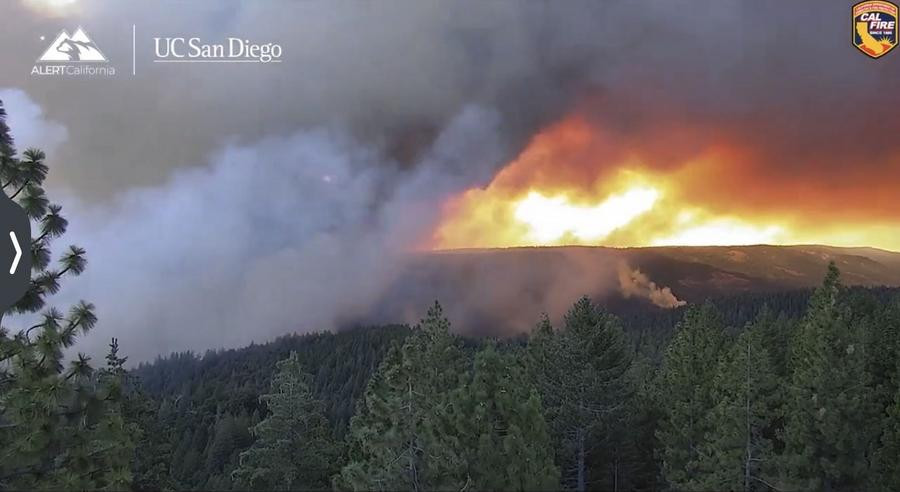
Firefighters are working tirelessly to contain the fire, but strong winds and dry conditions are complicating their efforts. The fire has already destroyed numerous homes and structures, leaving many residents homeless and seeking refuge in temporary shelters set up by local authorities.
Governor Gavin Newsom has declared a state of emergency in the affected areas, mobilizing additional resources to support firefighting efforts and assist displaced residents. The declaration aims to streamline the deployment of emergency services and facilitate federal assistance to manage the disaster's impact.
The fire, known as the Dixie Fire, began in Butte County and has since spread to neighboring Plumas County. As of now, the fire has scorched over 190,000 acres and is only 20% contained. The cause of the fire is still under investigation, but authorities suspect it may be linked to faulty power lines or human activity.
Evacuation orders have been issued for several communities, and residents are being urged to leave immediately for their safety. The Red Cross and other humanitarian organizations are providing food, water, and medical assistance to evacuees, while local law enforcement agencies are coordinating traffic control and security measures.
The scale of the disaster has drawn comparisons to the devastating Camp Fire of 2018, which destroyed the town of Paradise and claimed 85 lives. While no fatalities have been reported in the current fire, several firefighters have sustained injuries, and the risk of casualties remains high as the fire progresses.
The environmental impact of the fire is also a major concern. The destruction of forests and wildlife habitats is causing significant ecological damage, with long-term repercussions for the region's biodiversity. Additionally, the smoke and ash produced by the fire are contributing to poor air quality, posing health risks to residents even in areas not directly threatened by the flames.
Efforts to contain the fire are ongoing, with firefighting crews working around the clock to establish fire lines and protect critical infrastructure. Aircraft are being used to drop water and fire retardant on the most active parts of the blaze, while ground crews battle the flames with hoses and bulldozers.
The Federal Emergency Management Agency (FEMA) is coordinating with state and local authorities to provide disaster relief and support recovery efforts. Financial assistance is being made available to affected residents, and plans are being developed to help rebuild the damaged communities once the fire is under control.
Climate experts warn that wildfires are becoming increasingly frequent and severe due to rising global temperatures and prolonged drought conditions. The current fire season in California has already seen a significant increase in the number of large fires compared to previous years, highlighting the urgent need for effective wildfire management and climate adaptation strategies.
As the battle against the Dixie Fire continues, residents are reminded to stay informed about evacuation orders and safety advisories. The cooperation of the community and the tireless efforts of emergency responders remain crucial in mitigating the fire's impact and safeguarding lives and property.
Topics
Live News
